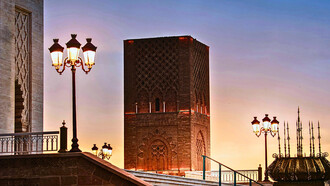My home is a sacred space and one rarely open to strangers. I am protective of its energy since I sleep, write, relax and restore there along with my cats. Mine is a far cry from a tribal existence.
But as another example of East African hospitality, the Maasai of Kenya warmly welcomed me and fellow tourists onto their village compound. In exchange for USD20 (a fundraiser for their local school), we talked with Maasai warriors after a traditional welcome dance including jumping and guttural melodies. The higher the jump, the more desirable the male bachelor. If only it were that easy to filter out the good ones in American dating …
I first saw images of the Maasai tribe in their trademark bright pink and orange robes (shuka in the Maa language) and large earrings as a child (refer to Part One of my East Africa series.) To meet them and witness elements of their lives decades later was emotional for me.
The Maasai are ethnic to East Africa and live between present-day Kenya and Tanzania. About 180 family members of this particular subset live together on one compound. They move every nine years in accordance with nomadic traditions. It takes the women two months to rebuild each hut, which they form in a circle to provide a large meeting space for special occasions. As an example, fifteen-year-old Maasai boys endure a public circumcision in the village center without any sedation. Elders hold the legs and arms of the boys as a means of detecting if the boys squirm or flinch. Any movement or screaming is considered weakness and automatically disqualifies a boy from pursuing the title of warrior. Female genital mutilation has since been outlawed in response to international pressure.
Young men who pass the circumcision test are sent into the bush for five years. This immersive survival class teaches them about poisonous plants, how to co-exist peacefully with animals, and other skills necessary to be a village leader. How do they know when five years has elapsed? By counting each sunrise. Some but not all Maasai (and not those taking the warrior test) have smartphones in this modern era, which is their primary form of communication with the Kenyan government and a means to monitor the weather. Many only speak Maa, though a few elders speak English. Remarkably, they have managed to maintain a traditional lifestyle amidst the influences of globalization and foreign tourism.
We also learned from our elder-guide that the Maasai do not kill animals aside from cows. Their diet largely includes beef, milk and marrow - the true meaning of the word “organic.” Animals are revered by the Maasai, cattle in particular, whose feeding, grazing and care dictate the rhythms of the day. The lions, giraffes, zebras and other creatures of the bush are deferential to their human neighbors, who they consider something between co-inhabitants and authority figures. Our tour guides proudly explained this unique relationship to us while on safari. I couldn’t help but think of the Book of Genesis, in which it’s reported that God gave dominion to man over the animal kingdom.
Throughout our overland travels, we’d see Maasai outside of the village context: tending to their flocks, taking boda-boda (motorbikes) to and from different markets, or traveling by foot. Always a wave and a smile - which, frankly, I had come to expect from such gracious hosts by that point in my adventures.
More to come from East Africa!















